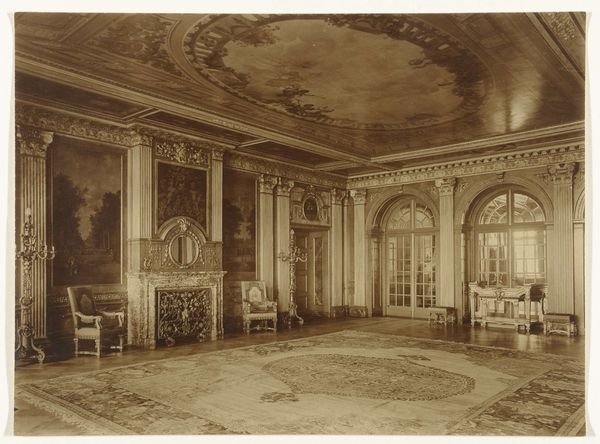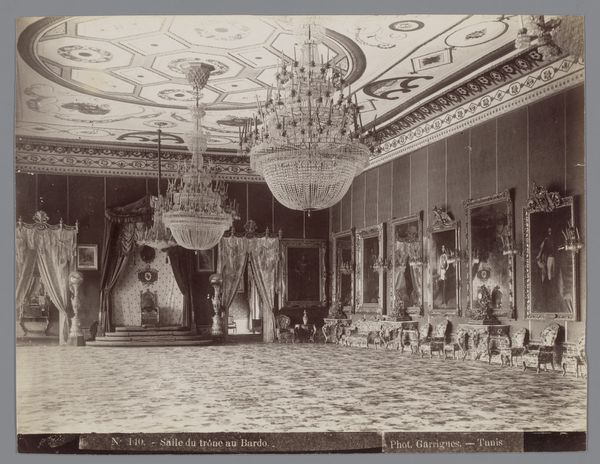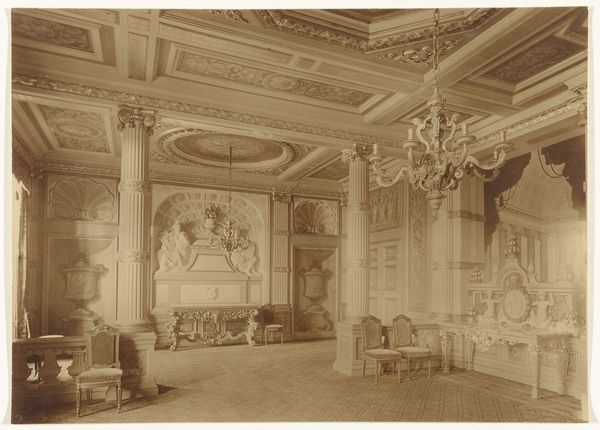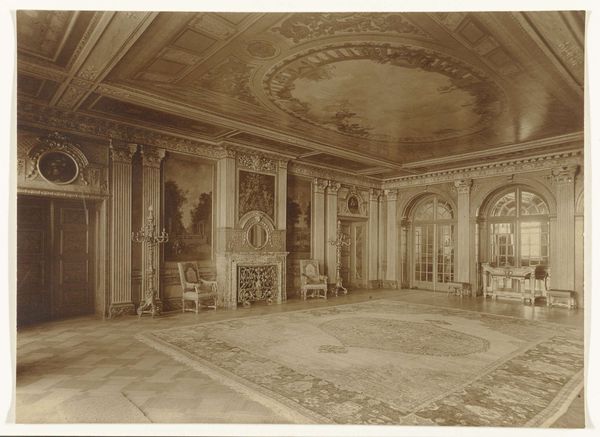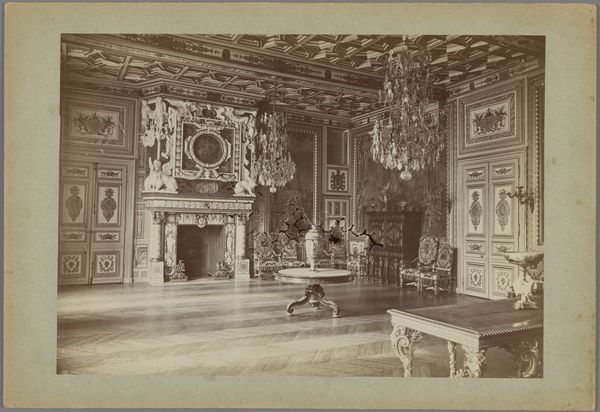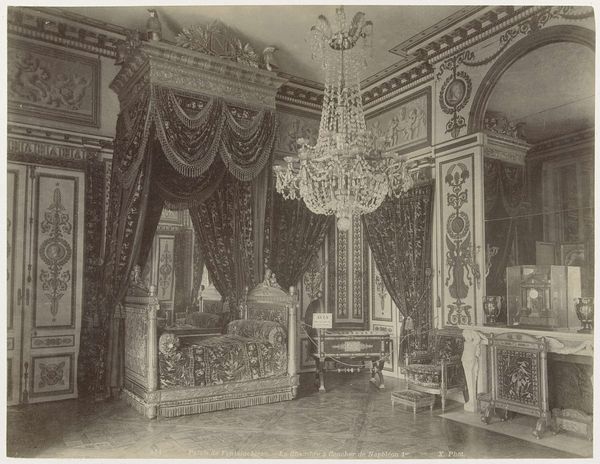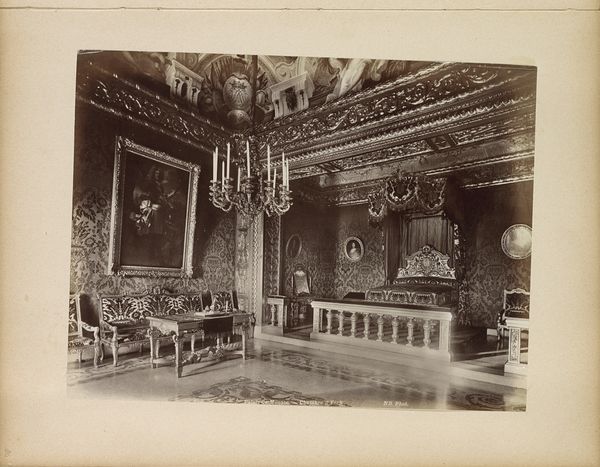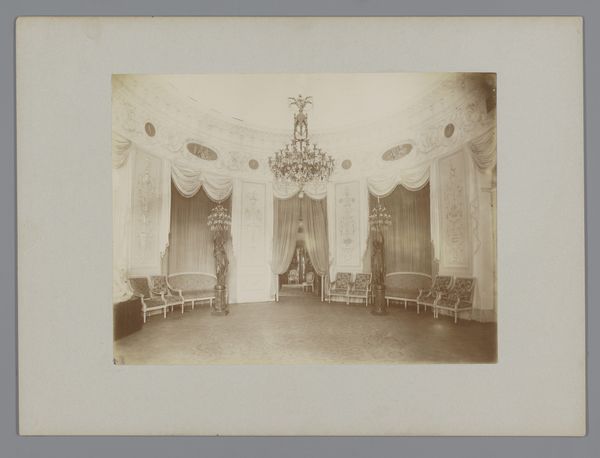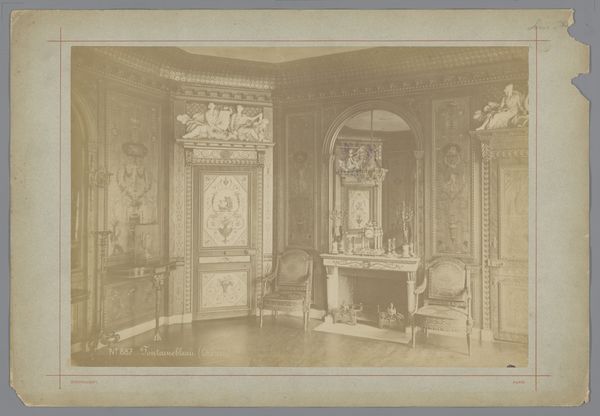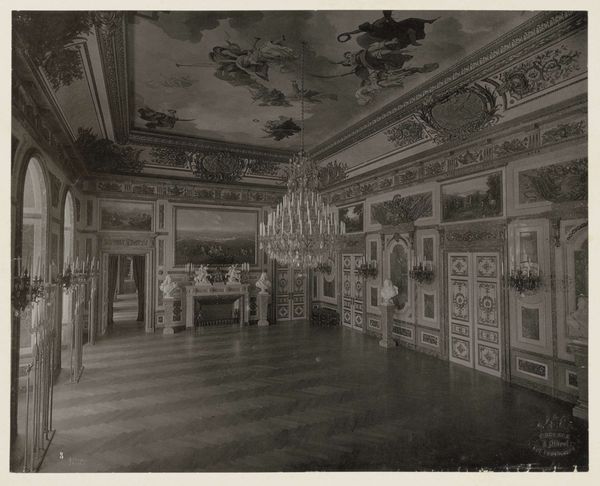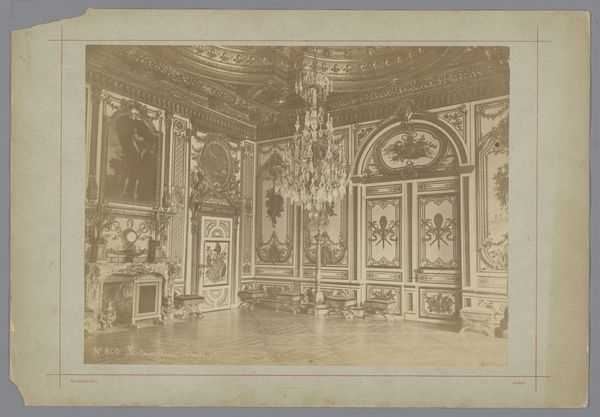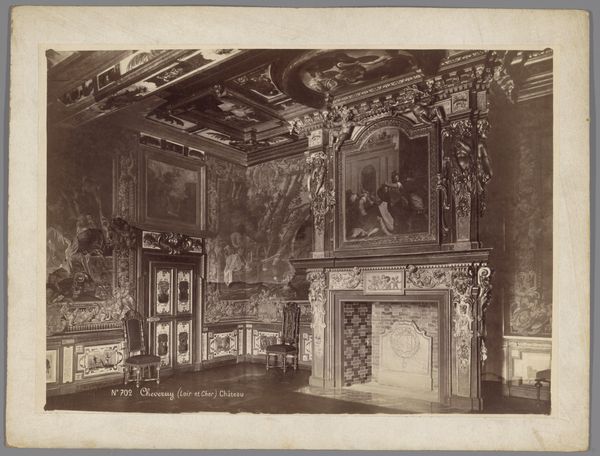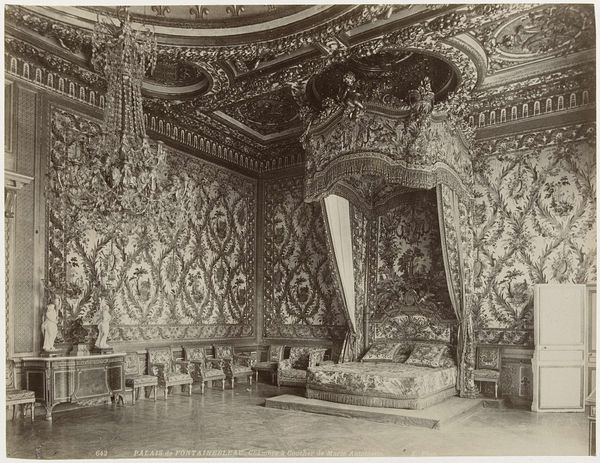
photography, architecture
#
statue
#
historic architecture
#
photography
#
19th century
#
architecture
#
statue
Dimensions: height 200 mm, width 249 mm
Copyright: Rijks Museum: Open Domain
Curator: Looking at this photographic print, "Interieur van de Sala nera in het Museo Poldi-Pezzoli te Milaan," dating roughly from 1890 to 1920 by Giacomo Brogi, I’m struck by how it encapsulates a very specific historical moment. Editor: Yes, instantly, this image exudes opulence. It is a snapshot of concentrated wealth and carefully curated artistry. You notice, right away, all the crafted details and the density of ornament in this Milanese museum's "black room." Curator: Absolutely. The photograph offers a glimpse into a world where the very architecture functions as a testament to power. Consider the historical context: Milan in this period was undergoing immense social change, and the Museo Poldi-Pezzoli itself was born from a collector's vision. It begs the questions: whose stories are being told here, and who had the resources to build and preserve such a space? Editor: And we should certainly consider how photography itself operates in this moment as a method of inventorying and communicating class. Each of these precious items had to be individually made. We must acknowledge not only the artistic labor, but also those involved in material sourcing, transportation, construction. Who made the statues and laid the patterned floors? Curator: Precisely. The construction, the paintings on the walls, the arrangement of the space – they all signal something beyond aesthetics. It speaks to a narrative of power, the careful selection and display mirroring the collector's own worldview and the historical events influencing the shaping of his vision. Editor: The details draw the eye around. Everything is vying for attention. This pre-dates, of course, industrial reproducibility's effect on these art objects. Now displayed for the general public, we are viewing relics of aristocratic, hand-crafted luxury. It reminds us how cultural objects can be imbued with political undertones. Curator: I completely agree. Considering Brogi's photograph in our era necessitates critical dialogue around cultural institutions. Understanding that spaces like these reflect not only the past but also shape the future perception of art and history is vital. The image challenges us to engage in ongoing conversations. Editor: In the end, the careful assemblage is more than a record of objects; it documents an era’s ideals concerning aesthetics and artistic output that also had great impact. Curator: Indeed. Brogi’s lens gives us more than just a glimpse inside a museum; it reveals the framework for social and political power.
Comments
No comments
Be the first to comment and join the conversation on the ultimate creative platform.
